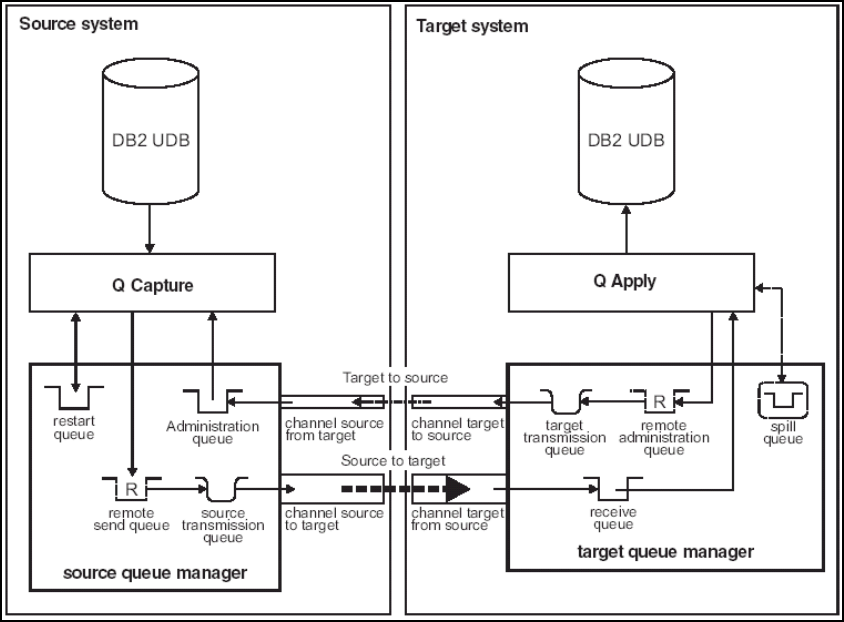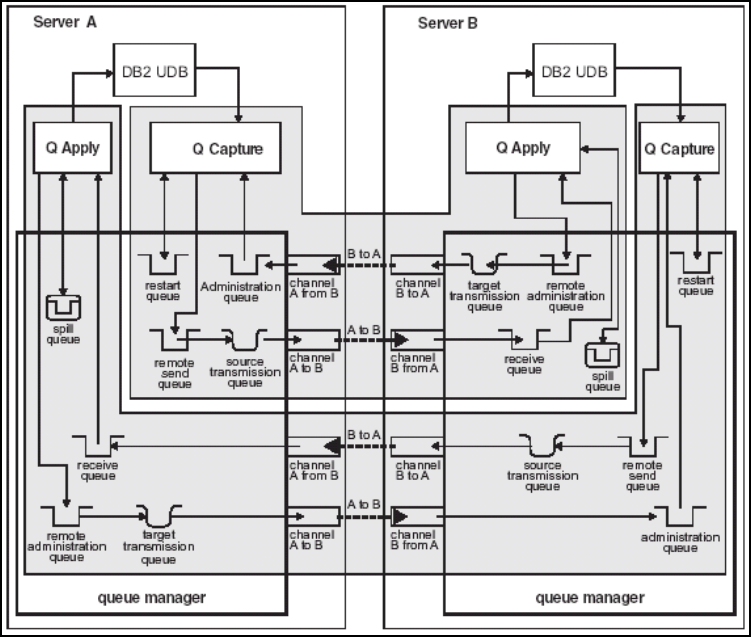Appendix A. WebSphere MQ overview 733
Transactional support
An application program can group a set of updates into a unit of work. These
updates are usually logically related and must all be successful for data integrity
to be preserved. If one update succeeds while another fails, data integrity is lost.
When a unit of work completes successfully, all updates made within that unit of
work are made permanent and irreversible. However, if the unit of work fails, all
updates are instead backed out. This process is sometimes called syncpoint
coordination.
A local unit of work is one in which the only resources updated are those of
the WebSphere MQ queue manager. Here syncpoint coordination is provided
by the queue manager itself using a single-phase commit process.
A global unit of work is one in which resources belonging to other resource
managers, such as XA-compliant databases, are also updated. Here, a
two-phase commit procedure must be used, and the unit of work can be
coordinated by the queue manager itself, or externally by another
XA-compliant transaction manager such as IBM TXSeries® or BEA Tuxedo.
For further details about WebSphere MQ, refer to WebSphere MQ System
Administration Guide, SC34-6068-02.
Q replication objects
Depending on the type of replication or publishing to be performed, various
WebSphere® MQ objects need to be defined.
The WebSphere® MQ objects required by the Q Capture and Q Apply programs
are as follows:
Queue manager
One queue manager is required on each system.
Send queue
This is a queue that directs data messages from a Q Capture program to a Q
Apply program or user application. In remote configurations, this is the local
definition on the source system of the receive queue on the target system.
Each send queue should be used by only one Q Capture program.
Receive queue
This is a queue that receives data and informational messages from a Q
Capture program to a Q Apply program or user application. This is a local
queue on the target system.





